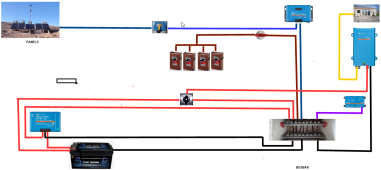For personal reasons I have to find an alternative backup method to a generator and considering installing a 24 volt 100ah stand alone lithium battery into our solar system which itself use 18 month old AGM batteries which are performing well . Daytimes we have far more coming in than we need because I have deliberately over panelled so batteries at 100% by mid day and the batteries store more than sufficient to get us through the night , our DOD is no more than 25% , around 80ah however on the odd days we have bad weather the panels manage to keep us going in the day but we have to start a generator for a couple of hours at night to provide around 1kw charge into the batteries plus the 500wh we save on drawing from them in the house while its running , sufficient to get us through the night which is all we normally require .
I know little about Lithium batteries and I keep hearing about things like cell balancing , thermal runaway and BMS so not sure if I'm being nieve thinking you can just connect one of these batteries and use it this way being permanently connected to a small Victron DC to DC charger powered from the bus bar or that it might damage the battery or charger itself if its not designed for continual use , the battery would get little use no more than about 30 times a year mostly during winter months .
My proposal is that when required we could manually switch the power supply to our Multiplus 24/1200 from the battery bank to the Lithium battery rather than the generator as we do now .
I would be grateful for any comments , criticisms or suggestions before I part with any money .
I know little about Lithium batteries and I keep hearing about things like cell balancing , thermal runaway and BMS so not sure if I'm being nieve thinking you can just connect one of these batteries and use it this way being permanently connected to a small Victron DC to DC charger powered from the bus bar or that it might damage the battery or charger itself if its not designed for continual use , the battery would get little use no more than about 30 times a year mostly during winter months .
My proposal is that when required we could manually switch the power supply to our Multiplus 24/1200 from the battery bank to the Lithium battery rather than the generator as we do now .
I would be grateful for any comments , criticisms or suggestions before I part with any money .
Last edited:




